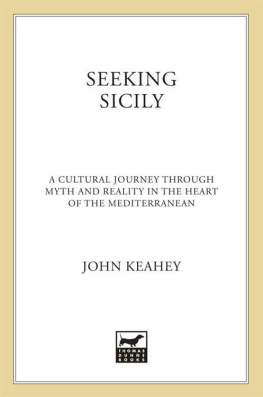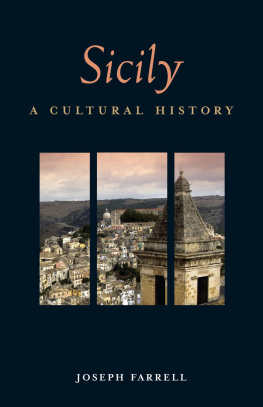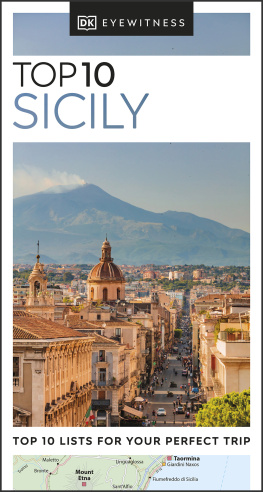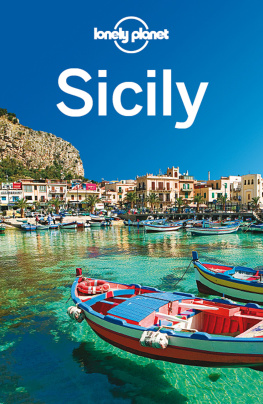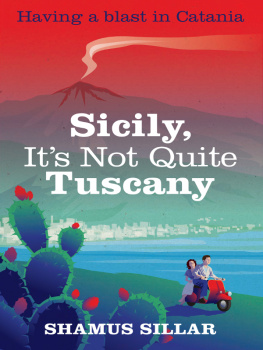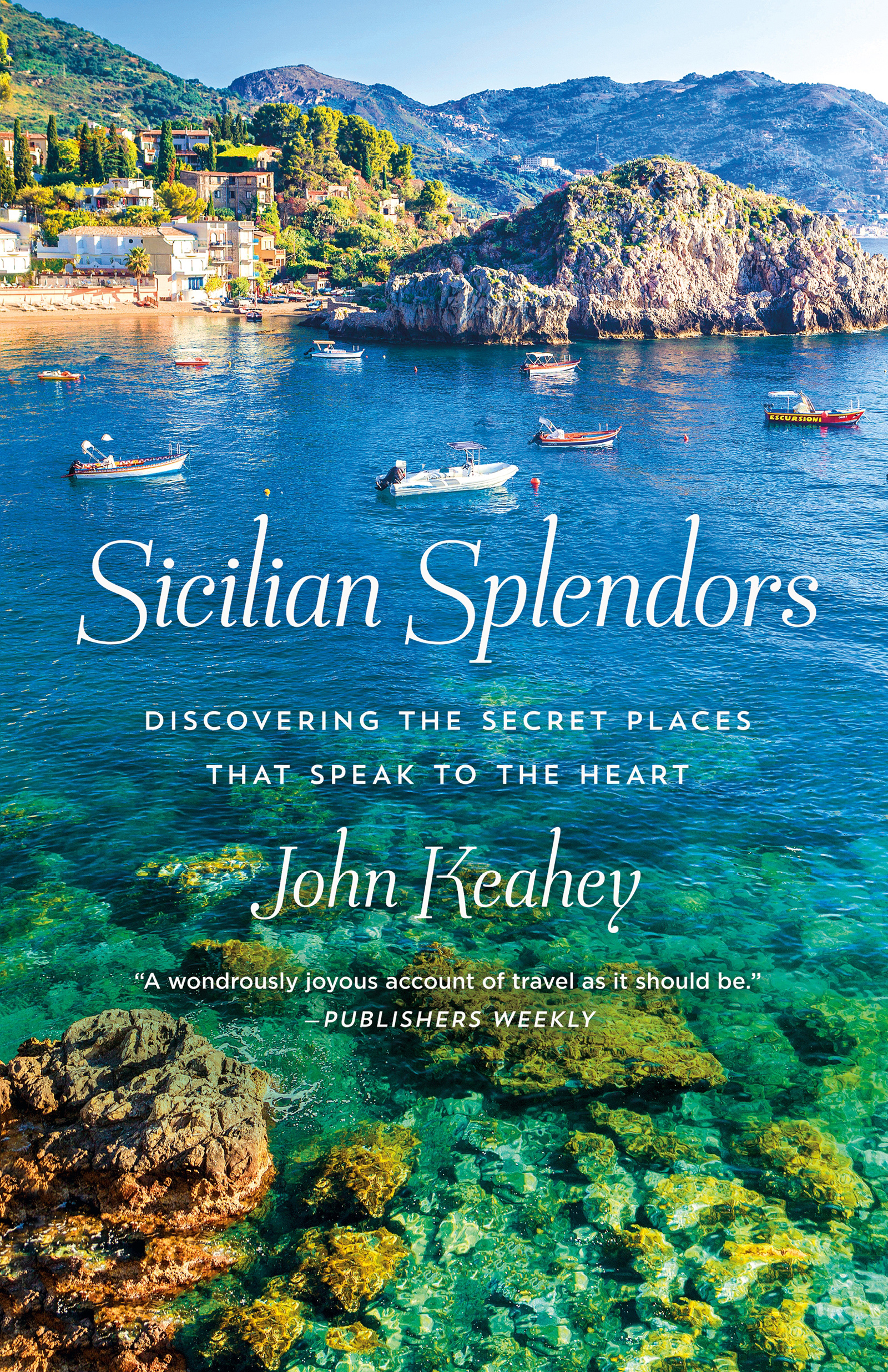Contents
Guide
Pagebreaks of the print version
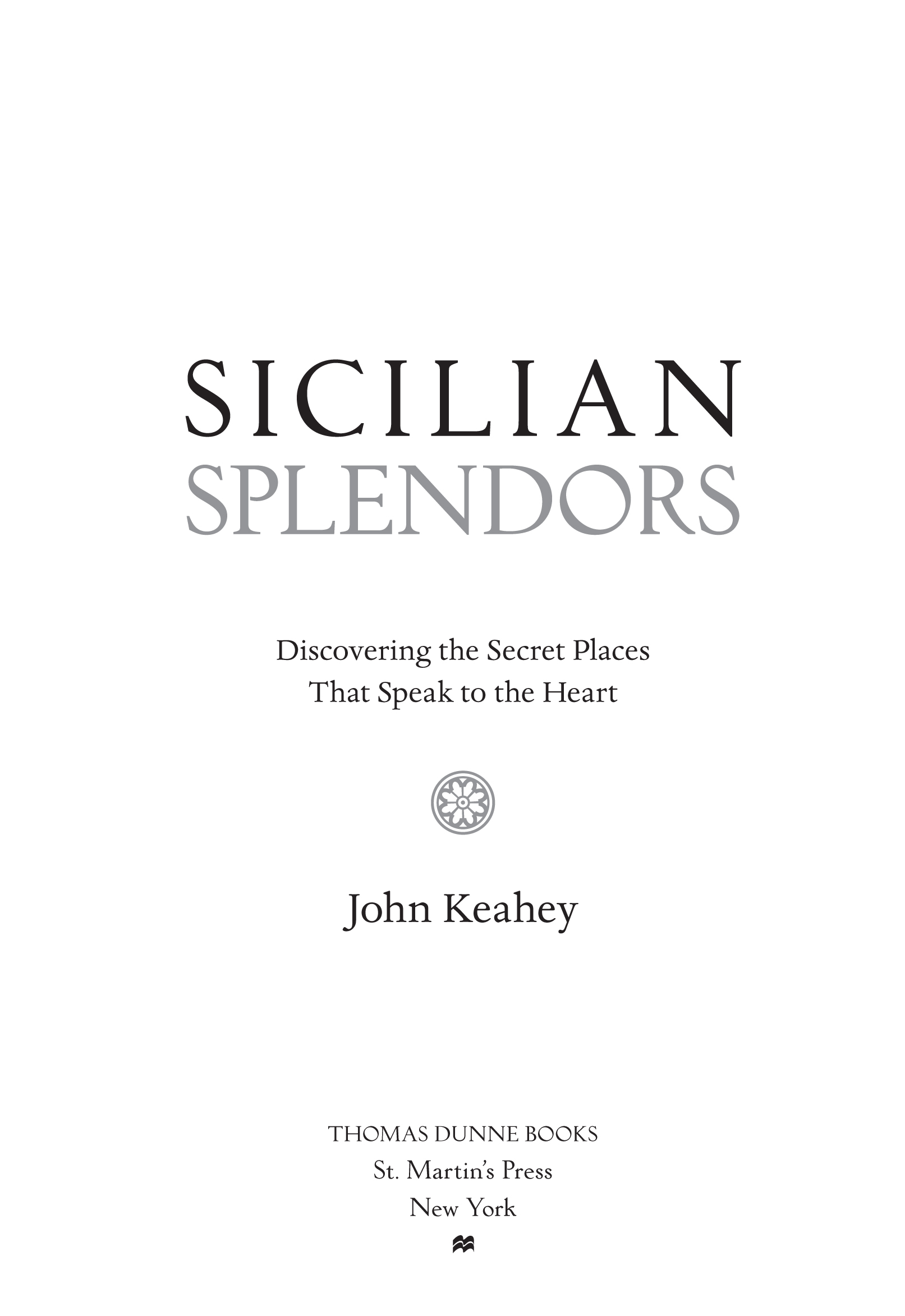
The author and publisher have provided this ebook to you for your personal use only. You may not make this ebook publicly available in any way. Copyright infringement is against the law. If you believe the copy of this ebook you are reading infringes on the authors copyright, please notify the publisher at:
us.macmillanusa.com/piracy .
Per i miei compari Siciliani,
Leonard Chiarelli and Alissandru (Alex) Caldiero.
For years their help, support, stories, and love of their culture have sustained me throughout my work.
And, again, for Connie-Lou Disney,
whose loving support keeps me on track.
Cities [and villages, one must assume] dont have their own energy. It derives from the density of their history, from the power of their literature and arts, of the emotional richness of human events that take place against that background.
Elena Ferrante,
Neapolitan author
T O L IVE in Sicilyor to wander among its small villages and townsis to repeatedly step into and out of the past. There are remnants everywhere, commingled with the modern, of the seventeen or so civilizations that have swept over this island for more than three thousand years: The yellowish foundation stones in that medieval-era structure perched along the edge of the village square might be Greek; the smaller stones sitting tight together atop that foundation could be from a Roman, or perhaps Byzantine or Arab, structure, its materials reused often more than once by Norman, or French, or Spanish builders, each into their own style and within their own era.
As a child, traveling with parents through the Intermountain West, I would spot a pine tree in a place where a sign would claim it was a hangout for robbers and other villains of the late 1800s. In my childish mind, I thought that tree, exactly as I was seeing it, would have been there a hundred years earlier, perhaps used to tie a horse or, worse, to hang a neer-do-well. I had no concept of how time changes landscapes, towns, and villagesover a century or over millennia. Eventually I understood what the classical scholar M. I. Finley taught me: The human mind plays strange tricks with time perspectives when the distant past is under consideration: Centuries become as years and millennia as decades.
He points out that, like all of us, I suppose, the Greeks had no idea that as they moved westward, ten generations after the war with Troy, and colonized places in southern Italy and Sicily that they were doing anything that was historically significant. They simply wanted to establish places in which to live, work, and enjoy life. They would change the untrammeled, wide-open, rich landscape they encountered by building hamlets, villages, and cities and absorbing indigenous peoples into their culture. Many of those places, over time, would be destroyed by opposing armies, rebuilt over and over throughout the ages to what we see today, our brief stop in times continuum. And their names would change, often dramatically, to reflect the different cultures that the island absorbed.
As I travel around Sicily, year after year, I often remember what I read, long ago, by Don Whitehead, a World War II correspondent for the Associated Press. He described what he saw in Sicily during the Allied invasion in the summer of 1943: Sicily had a gray look to it. Even the people had a gray, worn appearance. Their towns perched on hilltops like ragged caps stuck on the hoary heads of gray old men.
Today, a traveler does not see this Sicily. The towns no longer look that way, and the people certainly do not. Visitorsand even todays younger residentsmust imagine what it looked like during that emotionally and physically destructive war, just as it takes imagination to piece together the ruins of Greek temples at Selinunte or Agrigento. It is difficult for the casual observer to try to imagine what the Greek towns might have looked like before becoming the ruins that now are buried under scrub-covered hillsides or locked beneath the once-medieval but now-modern historic centers of places like Catania or under Agrigento, with its ugly postwar sprawl. Occasionally, I can find a gnarly olive tree that locals say is two thousand years old and imagine a Greek farmer leaning against it as he eats his noonday meal in the warm Sicilian sun.
The closest I came to being lost in imagination as a world-wise adult was when I stood, in 1986, between two columns on the platform of the Temple of the Dioscuri (Castor and Pollux) at Agrigentos Valley of the Temples. I stretched my arms out like the biblical Samson while a friend shot a photo. Standing on that platform, I had tried to visualize what must have been around me three thousand years earlier. I returned nearly three decades later, climbed up, and again stretched my arms out between the same two columns for another photograph. In comparing them side by side, I saw how dramatically I had changed, physically, from my early forties to my late sixties. The temple, its ruins still scattered as before, had not changed a bit.
There is a lot of the ancient Greek world tossed about in Sicily. The Greeks were the first historical colonizers of southern Italy and Sicily that the conquering Romans later called Magna Graecia, or Great Greece. These early Greeks displaced and absorbed many of the indigenous peoples that had wandered there from throughout the Mediterranean during Europes darkest prehistory. In more recent timesthe eighteenth and nineteenth centuries after a series of other conquerors had come and gone, and come againItaly and Sicily were the focus of well-to-do Europeans who wanted to absorb some of that ancient ambience.
A friend, Franco De Angelis, a professor of archaeology and Greek history, writes that these Greek ruins drew Grand Tour travelers to Italy and Sicily primarily because Greece, then part of the Ottoman Empire, was not as accessible. The activities of these travelers often centered around writing travelogues, studying and illustrating art and architecture and absorbing as much of Greek antiquity and its survival as possible. I have not spent a lot of time in Greece, but I suspect that there are more Greek ruins in Sicilyand many of them better maintainedthan in Greece.
Some of the many conquerors of this island in the center of the Mediterranean worldGreeks, Byzantines, Muslims, Normans, Germans, Spanishleft distinct marks on the land and the people. Others, such as the Romans, Vandals, and French, did not thoroughly integrate with the native islanders and left fewer marks. The DNA mostly associated with Sicilians whose family lines flow well back into antiquity comes from the Greeks, who blended in over the centuries with the islands original population, and the Muslims and Christian Berbers from North Africa.
Sicilians today make up a rich minestrone of many of these cultures, and many fiercely maintain their identity as Sicilians and not Italians. After all, it was the northern Italians who were the islands last conquerors, leading to the unification of Italy between 1860 and 1870.
Early in my experiences as a traveler, I often was frustrated because places I expected to be one waythe way I had imagined them to be as a childwere really quite different, much more modern, say, than I expected. The more I traveled, and the more I learned to toss off those early expectations and see each place and particularly its people in the context of what it now is, the more enjoyable those trips became. I learned to go beneath guidebook descriptions and the perfunctory writing of some magazine and newspaper travel sections and see what lies beneath the surface in foreign places. Concentrating on the people and their cultures, rather than just castles, ruins, and restaurant recommendations, became the goal.


